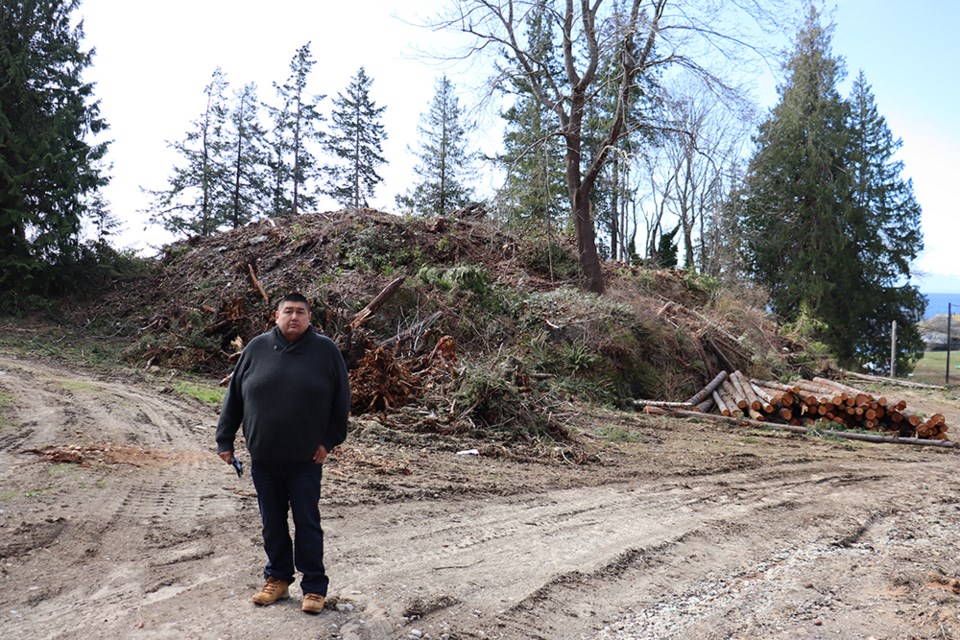Archaeological site breaches and frustration with the provincial archaeological branch were topics of discussion at the region’s recent community-to-community-to-community (C3) meeting.
Held virtually with elected and staff representatives from Tla’amin Nation, City of Powell River and qathet Regional District (qRD), the C3 conversation reviewed measures the three local governments can take to protect archaeological sites.
City chief administrative officer Russell Brewer said he could provide an update specific to Willingdon Beach campground. He said the city’s consultant is waiting to hear back from the provincial archaeological branch with the okay to do a post-impact assessment on the site.
“It’s frustrating for everyone involved because that goes back to September or October now and it’s consistent with your [Tla’amin’s] frustrations with the archaeological branch,” said Brewer.
Tla’amin executive councillor Dillon Johnson said one thing that is no mystery is the nation has had its share of frustrations recently with the archaeological branch. He said Tla’amin is working with the province to try to come up with a better arrangement for how Tla’amin can enforce compliance.
“There may be other ways we can work together as local governments to try to get ahead of these types of instances and breaches,” said Johnson. “Some ideas came forth from some of the discussions we’ve been having. Is there education the local governments could be providing to landowners to let them know what their responsibilities are with archaeological sites and potential archaeological sites on their private property?
“Perhaps there are extra steps that could be put in place for development permits over and above what exists currently to hopefully prevent future breaches.”
Mayor suggests map
City mayor Dave Formosa said it might be beneficial to create a map of the entire qRD for planners in all three governments. Formosa said the map can also be distributed to the community, which shows these archaeological zones.
He said he thought the city and qRD could provide letters of support to the province for Tla’amin to have control of the archaeological sites in its own region.
Brewer said Johnson was spot on regarding the need for increased training, awareness and understanding for all three governments. He said for city staff, there is the need for more training and beefed-up policies and procedures.
Brewer said if there was a commitment to focus on regional training and awareness, and if the three governments did it as a group, it would help everybody. He said elected officials, staff and the public could be involved.
qRD manager of planning services Laura Roddan said several years back there was something called the collaborative for the protection of archaeological sites. She said it was with the local ministry of forests, lands and natural resource operations office and the archaeological branch is under that ministry. She said provincial representatives and representatives of all three local governments were part of it.
“We met quarterly and it was very informative and educational,” said Roddan. “The group met regularly for several years and then it fizzled out. I wonder if the ministry might be able to resource that group again. I think that collaborative that was in place years ago would be really helpful to restart.”’
Tla’amin executive councillor Erik Blaney said it fizzled out because a funding stream for the project ended and another source could not be found. He said there was also a change in government provincially, which said the ministry was not a proactive agency but was strictly reactive and would be reacting to any infractions instead of doing proactive patrols.
Blaney said he thinks Roddan is correct and the three governments need to look at that structure again.
“I’m 100 per cent onboard to revive that in some way,” said Blaney.
He added that Tla’amin has almost no faith in the archaeology branch to monitor and enforce the Heritage Conservation Act in its territory.
“We’re looking at a way to take that on ourselves because we can do that better,” said Blaney.
Middens contain burial remains
He said Tla’amin has information that 90 per cent of the shell middens that have been excavated in its territory contain burial remains.
“When you look at the Willingdon Beach site, that shell midden, and you look at Grief Point, Myrtle Rocks, Centennial Drive and Emmonds Beach, there are a lot of middens there,” said Blaney. “From our point of view, that means there are a lot of burials there as well. We need to look at the planning processes, knowing that there is no permitting for the regional district areas.
“That’s a major issue. It’s not that we want permitting, we just want to know when somebody is developing and they are mitigating any of the cultural heritage values that may be on their property.”
Tla’amin hegus John Hackett said the takeaway from the discussion is that there needs to be work on a local government protocol that has information sharing and keeps the dialogue open.
“I’m not sure if we could task a committee from this group to take on that,” said Hackett.
qRD board chair Patrick Brabazon suggested he, Hackett and the mayor get together with the chief administrative officers and discuss how a protocol could be set up, bearing in mind that the regional district doesn’t issue building permits.
Hackett said he thinks that is a great idea and sets out a clearer game plan.



